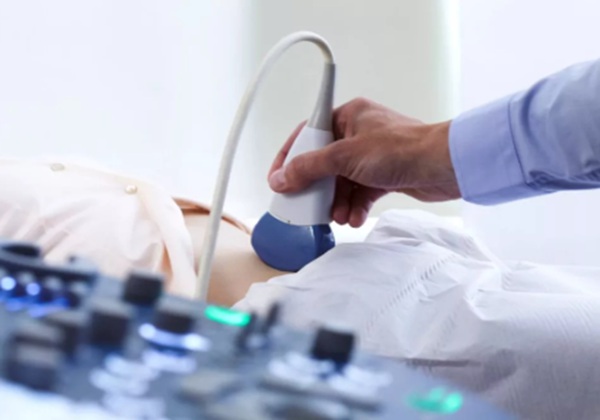代孕中的模拟周期深度解析

代孕是一种帮助那些因生理原因无法自己生育孩子的人实现生育愿望的方式。在代孕过程中,模拟周期 是至关重要的一步,因为它直接关系到胚胎移植的成功率和妊娠的顺利进行。模拟周期通过激素药物调整代孕母亲的身体状态,模仿自然月经周期,为胚胎着床创造最佳条件。这一过程确保子宫内膜厚度、激素水平等指标达到理想状态,从而提高妊娠成功率。
本文将详细解释模拟周期的每个环节,包括如何同步周期、检测子宫内膜容受性以及准备胚胎移植的具体步骤。我们将使用简单易懂的语言 和加粗的关键信息 ,让读者快速掌握核心内容,理解其重要性及操作细节。
什么是模拟周期?
模拟周期就像一次“试运行”,是代孕或试管婴儿过程中不可或缺的一部分。它发生在真正的胚胎移植之前,目的是确保代孕母亲的身体能够为怀孕做好充分准备。在这一步骤中,代孕母亲会服用与正式周期相同的药物,例如雌激素和孕激素,以模拟真实的生理状态。医生会通过超声波和血液检测密切观察她的身体反应,特别是子宫内膜的厚度和容受性是否适合胚胎着床。
此外,模拟周期还可以帮助发现潜在问题,例如子宫内膜感染或发育不成熟,从而避免在正式周期中出现失败。这一步骤不仅提高了胚胎移植的成功率,还为后续治疗提供了重要参考数据。简而言之,模拟周期是一次全面的“预演”,为成功妊娠奠定基础。
模拟周期的目标是:
- 让子宫准备好。 模拟周期的核心任务之一是通过激素药物调整代孕母亲的子宫内膜状态,使其达到适合胚胎着床的理想条件。子宫内膜的厚度通常需要达到7-8毫米,并且具备良好的容受性。这一过程模拟自然生理周期,确保子宫环境能够为胚胎提供充足的营养和支持,从而提高妊娠成功率。
- 检查药物是否有效。 在模拟周期中,代孕母亲会服用与正式周期相同的药物,如雌激素和孕激素。医生会通过超声波和血液检测密切观察她的身体反应,评估药物是否能够有效调节激素水平并促进子宫内膜的发育。这一步骤不仅验证了药物方案的适用性,还为后续治疗提供了重要参考数据。
- 提前发现任何问题。 模拟周期还充当了一次全面的“预演”,帮助医生识别潜在问题,例如子宫内膜过薄、感染或其他异常情况。通过提前发现问题,可以及时调整治疗方案,避免在正式胚胎移植时出现失败,从而最大限度地提升成功妊娠的可能性。
为什么模拟周期很重要?
模拟周期非常重要,因为它可以帮助胚胎更好地附着在子宫上,这是成功妊娠的关键步骤。以下是几个原因:
- 更好的子宫接受性: 子宫内膜必须厚且健康,才能为胚胎提供理想的着床环境。研究表明,子宫内膜厚度通常需要达到7-8毫米,并具备良好的血流供应和容受性。模拟周期通过激素药物调节代孕母亲的子宫内膜状态,并通过超声波和血液检测评估其是否达到理想条件。这一步骤确保子宫在接受胚胎时处于最佳状态,从而显著提高胚胎附着的成功率。
- 个性化用药: 每位代孕母亲的身体状况和对药物的反应都不同。模拟周期帮助医生根据代孕母亲的具体情况调整药物剂量和方案,以实现最佳效果。例如,有些人可能需要更高剂量的雌激素来促进子宫内膜增生,而另一些人则可能需要调整孕激素的使用时机。这种个性化的治疗方案不仅提高了成功率,还减少了不必要的副作用。
- 早期发现问题: 模拟周期如同一次“预演”,能够提前发现潜在问题。例如,子宫内膜过薄、感染或其他异常情况都可以在这一阶段被识别出来。如果发现问题,医生可以在正式胚胎移植前进行干预和调整,避免浪费宝贵的胚胎资源和时间。这一步骤大大降低了失败的风险,为后续的成功妊娠奠定了坚实基础。

模拟周期的步骤
模拟周期有几个步骤。每一步都很重要。我们逐一来看:
步骤1:药物
在模拟周期中,代孕母亲会服用多种药物,这些药物共同作用以确保子宫环境适合胚胎着床和妊娠维持。这些包括:
- 避孕药: 用于控制月经周期,帮助医生精确调整代孕母亲的生理状态,防止排卵过早发生。
- 雌激素: 用于促进子宫内膜增生,使其厚度达到理想水平(通常为7-8毫米),为胚胎提供良好的附着条件。
- 黄体酮: 为子宫做好接受胚胎的准备,同时支持早期妊娠阶段的激素需求。
- 阿司匹林(小剂量): 改善子宫血流,增加胚胎着床的成功率。
- 甲泼尼龙(Medrol): 一种抗炎药物,用于减少子宫的免疫反应,避免胚胎被母体免疫系统排斥。
- 多西环素(Doxycycline): 一种抗生素,用于预防感染,保护子宫和胚胎免受病原体侵害。
步骤2:监测
医生会密切观察代孕母亲的身体反应,以确保药物效果达到预期。他们使用以下方法:
- 超声波检查: 定期进行超声波检查以评估子宫内膜的厚度、形态及血液供应情况。这是判断子宫是否准备好接受胚胎的关键指标。
- 血液测试: 测量雌激素、黄体酮等激素水平,确保它们处于适宜范围,以支持子宫内膜发育和胚胎着床。

步骤3:试验移植
在这一步中,医生会进行一次“试验移植”,这是一个非常重要的预演环节。他们会使用一种叫做导管的特殊工具,将其插入子宫腔,测试其适合度和路径。这一步有助于医生了解子宫的解剖结构,选择最佳的导管类型,并规划正式移植时的操作方案。通过试验移植,可以发现潜在问题(如子宫颈狭窄或子宫位置异常),从而提前解决,提高正式移植的成功率。
模拟周期需要多长时间?
模拟周期通常持续2到3周 ,这一时间段与自然月经周期的卵泡期和黄体早期相似。在此期间,代孕母亲会按照医生的指导服用多种药物(如雌激素、黄体酮等),以调整子宫内膜状态并为胚胎移植做好准备。同时,她需要定期前往诊所接受监测,包括超声波检查和血液测试,以评估子宫内膜厚度和激素水平是否达到理想状态。这种密切的监测确保了医生能够根据她的身体反应及时调整治疗方案,从而提高后续胚胎移植的成功率。
模拟周期的好处
模拟周期有许多好处,以下是最重要的几点:
- 更高的成功率 研究表明,经过模拟周期的准备,胚胎移植的成功率可以提高10–15% 。这是因为模拟周期通过药物和监测优化了子宫内膜的状态,使其更适合胚胎着床,从而显著提升了妊娠的可能性。
- 个性化方案 每位代孕母亲的身体状况不同,对药物的反应也存在差异。在模拟周期中,医生可以根据她的具体情况调整药物剂量和类型,制定个性化的治疗方案。这种定制化的方法不仅提高了成功率,还减少了不必要的副作用。
- 问题检测 模拟周期如同一次“预演”,可以帮助医生提前发现潜在问题,例如子宫内膜过薄、感染或解剖结构异常等。这些问题可以在正式移植前得到解决,避免浪费宝贵的胚胎资源和时间。
- 更好的同步性 通过模拟周期,代孕母亲的身体状态能够与胚胎移植的时间保持高度同步。这种同步性对于确保胚胎顺利着床至关重要,因为它使子宫内膜在最佳时机接受胚胎,从而最大限度地提升妊娠成功率。

模拟周期后会发生什么?
在模拟周期之后,代孕母亲会为真正的胚胎移植做好准备。医生会利用模拟周期中收集的信息(如子宫内膜厚度、激素水平和药物反应)制定详细的治疗计划。该计划包括:
- 何时开始服药: 根据模拟周期的结果,医生会精确安排药物的起始时间,以确保子宫内膜与胚胎发育同步。
- 服用多少药物: 根据代孕母亲的身体反应,个性化调整药物剂量,优化子宫环境。
- 何时进行移植: 医生会选择最佳时机进行胚胎移植,通常是在黄体酮支持下,子宫内膜达到理想状态时。
成功率和统计数据
模拟周期有助于显著提高胚胎移植的成功率。研究表明,当进行模拟周期时,成功率可以提高10–15% 。这是因为模拟周期通过药物和监测优化了子宫内膜的状态,使其更适合胚胎着床。此外,模拟周期还能帮助发现潜在问题并提前解决,从而进一步提升妊娠的可能性。
模拟周期的成本
模拟周期会增加代孕过程的额外成本,但其重要性不容忽视。费用通常在1,000至2,500美元之间 ,具体取决于诊所的收费标准和所在地区。这些费用包括药物(如雌激素、黄体酮等)、超声波检查、血液测试以及医生就诊的费用。尽管成本较高,但模拟周期带来的高成功率使其成为一项值得投资的关键步骤。
参与模拟周期的相关实体
许多人员和机构共同协作,确保模拟周期的顺利进行。以下是一些关键参与者:
- 生殖内分泌学家: 他们是整个过程的核心,负责监督模拟周期,制定个性化的治疗方案,并根据监测结果做出调整。
- 生育诊所: 提供必要的药物、设备和技术支持,并进行超声波检查和血液测试,评估代孕母亲的身体状况。
- 代孕母亲: 她是模拟周期的直接参与者,需要按时服用药物、定期接受监测,并严格遵循医生的指示,以确保身体达到最佳状态。
- 预期父母: 虽然不直接参与医疗过程,但他们通过情感支持和沟通,帮助代孕母亲保持积极的心态,这对成功妊娠至关重要。
- 胚胎: 即将被移植的“宝宝”,是整个过程的核心目标。胚胎的质量和发育阶段也会影响最终的成功率。
- 子宫: 作为胚胎附着和生长的身体部位,子宫的状态直接影响妊娠结果。模拟周期的重点就是优化子宫内膜的厚度和容受性,为胚胎提供理想的着床环境。
关于模拟周期的常见问题
以下是针对一些常见问题以及答案:
- 模拟周期总是必要的吗? 是的,几乎所有的代孕母亲都需要进行模拟周期。它通过优化子宫内膜状态和同步胚胎发育,显著提高胚胎移植的成功率。没有这一准备阶段,妊娠失败的风险会增加。
- 药物有哪些副作用? 这些药物经过临床验证是安全的,但可能引发轻微副作用,例如恶心、腹胀和情绪变化。这些症状通常与激素水平波动有关,并会在周期结束后逐渐消失。
- 模拟周期和失败周期有什么区别? 模拟周期是经过医生严密计划和监控的过程,旨在为胚胎移植创造理想条件。而失败周期则是由于子宫内膜过薄或其他问题导致胚胎无法成功着床的结果。
结论
模拟周期是代孕中的关键步骤,直接关系到胚胎移植的成功率。它通过药物调节、超声波监测和试验移植等手段,确保代孕母亲的子宫内膜达到最佳状态,为胚胎着床创造理想环境。这一过程不仅提高了妊娠成功率,还帮助解决潜在问题,从而实现组建幸福家庭的梦想。如果您想了解更多,请咨询您的生育诊所或生殖内分泌学家。他们可以根据您的具体情况提供个性化建议,并指导您完成整个代孕流程。您正在考虑代孕吗?深入了解代孕步骤以及模拟周期如何优化妊娠条件,将为您带来更清晰的认识和信心。